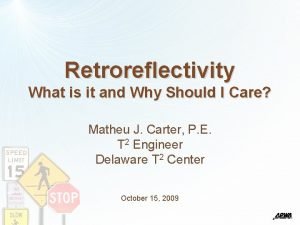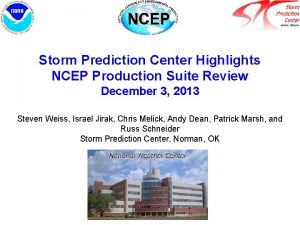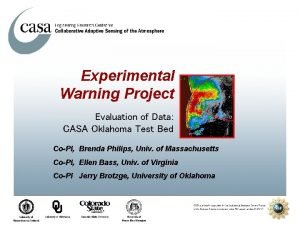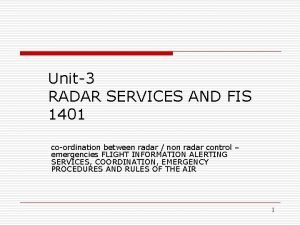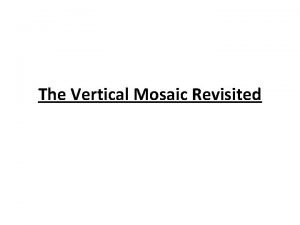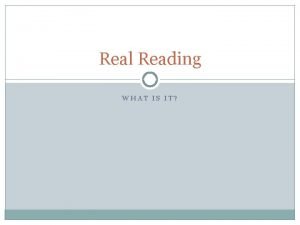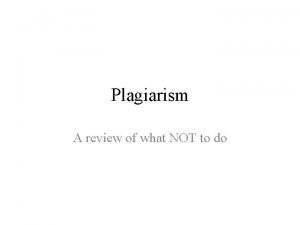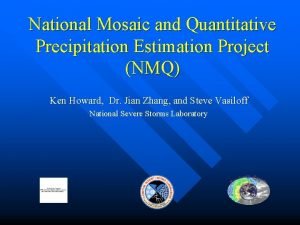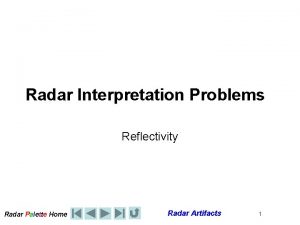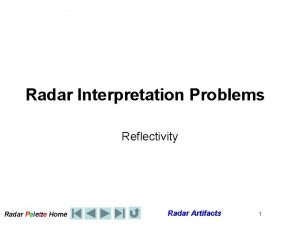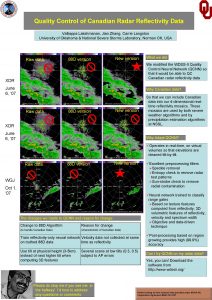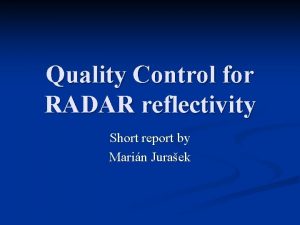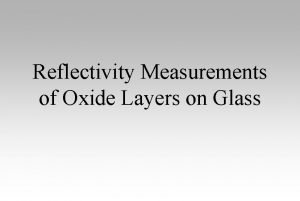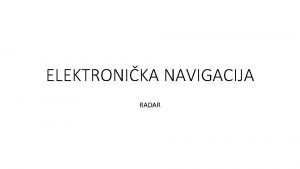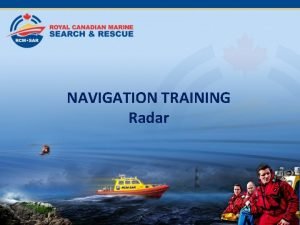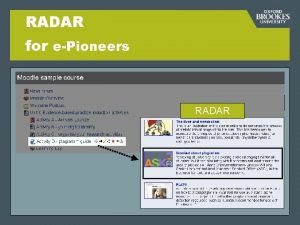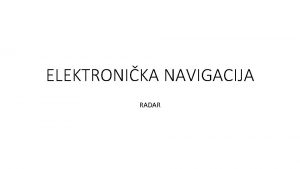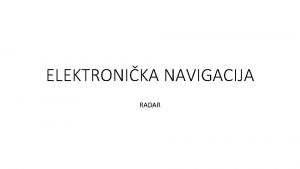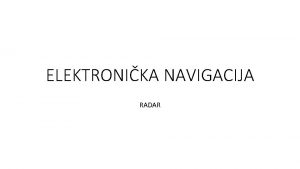Radar Reflectivity Quality Control and 3 D Mosaic















- Slides: 15

Radar Reflectivity Quality Control and 3 -D Mosaic (and ideas for eventual use of data in WRF GSI) 4 January 2005

Code Functionalities Input of Level-2 data (single radar compatible) n Regrid raw radar volume scan to 1° x 1 km spherical grid n Produce “hybrid scan” of base reflectivity to address beam-blockage issues n Perform QC n Produce 1 km cartesian grid from QC’d data n

Reflectivity QC Techniques n n Ø Terrain-based u Assuming normal propagation u Using high-resolution DEM data u Calculate occultation based on radar power density u Create a “hybrid scan” lookup table 3 D radar fields structure-based u Vertical reflectivity gradients u Horizontal reflectivity structure PURPOSE: To remove non-precipitation echoes

Terrain Based QC l All reflectivity bins below a terrain-based hybrid scan (O’Bannon, 1997*) are removed. The hybrid scan bins are the lowest ones which meet the following criteria: * Bottom of the bin must clear the ground by at least 50 m (500 ft for ROC). * Less than 50% power blockage at any shorter range bin in the same radial. * O'Bannon, 1997: Using a 'terrain-based’ hybrid scan to improve WSR-88 D precipitation estimates. Preprints, The 28 th International Conference on Radar Meteorology, September 7 -12, 1997, 506 -507

New Hybrid Scans Using High-resolution Terrain Power density distribution & beam blockage Beam geometry vs. terrain

Structure-based QC: Possible Nonprecipitation echoes Echo Ground/Sea Clutter Sun strobe Chaff Clear air returns Birds and insects Electronic interferences Non-precip clouds

Reflectivity QC Variables Z SIGN Median Texture Vert. Grad. SPIN Reflectivity Structure: KFWS, 4/20/1995, 04: 53 Z

Some Notes… u SPIN is not very useful since it shows very similar characteristics for clutter and around convective storms u SIGN and Texture are very similar u Median is similar to raw reflectivity u Vertical gradient is very useful, especially at close ranges

QC Decisions A reflectivity datum is removed if P_nonpcp > P_thresh

Reflectivity QC Before KFWS 1995 -04 -20. 0453 Z After

Reflectivity QC Before KFWS 1995 -04 -20. 1850 Z After

Reflectivity QC Before KTLX 2002 -10 -18. 1246 Z After

Future Use of Reflectivity Data in GSI

n Separate “cloud analysis” system u n n n Use Z-R/Z-M relationships to diagnose hydrometeor concentrations Nudge vertical momentum via 3 -D divergence constraint u Variational approach to w component Nudge (I know, bad word) to maintain rh/latent heat release to support w-component Similar to FSL’s Hot Start and CAPS ADAS cloud analysis

n Eventually: define error covariance matrices (? ) for use of reflectivity in a “true” 3 -D sense (not a diabatic or nudging technique, per se) n FIRST THINGS FIRST: MOSAIC/QC package running operationally at NCEP
 Advantages of non coherent mti radar
Advantages of non coherent mti radar Mti vs pulse doppler radar
Mti vs pulse doppler radar Composite reflectivity
Composite reflectivity Retro reflectivity
Retro reflectivity Composite reflectivity
Composite reflectivity Composite reflectivity
Composite reflectivity Composite reflectivity
Composite reflectivity Perform quality assurance
Perform quality assurance Concepts of quality
Concepts of quality Plan quality management pmp
Plan quality management pmp Quality metrics pmp
Quality metrics pmp Sigmet volcanic ash
Sigmet volcanic ash Vertical mosaic
Vertical mosaic Real reading salad
Real reading salad Mosaic plagiarism
Mosaic plagiarism National mosaic full resolution loop
National mosaic full resolution loop



